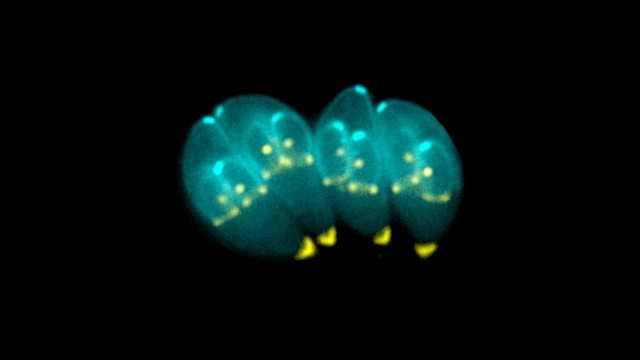Author: Intern
Marine Parasite of the Month July 2021-Answer
The parasite for this month was the Loxothylacus panopaei, which is often just referred to as a crab barnacle that can change the gender of a crab. The most common way to identify this parasite is by looking on the underside of the crab for what looks like an egg sac, but is really a […]
Marine Mammal Parasite of the Month Answer- April 2021
This parasite is the marine mammal lungworm! Here at NMLC the most common lung worm infections we see present in our seals are Otostrongylus circumlitus and Parafilaroides gymnurus. These are mostly found during routine fecal analysis of our seals, but can also be seen during necropsies as well. Some of the first signs of a […]
Marine Mammal Parasite of the Month- March 2021
This parasite is most commonly reported in cetaceans, but some cases has been seen in pinnipeds, fish and rarely humans. It is distinguishable thanks to their longitudinal rows of overlapping hooks on their proboscis, the hollow retractable extremity used to latch onto its host. This parasite can be as small as 1millimeter long or grow […]
Patient Update: January 21, 2021
Since our most recent blog post in November, a lot has been going on here at NMLC! We’ve been kept busy by a record-breaking sea turtle stranding season here on Cape Cod. Here’s a quick rundown of some details from this sea turtle season: A total of 1174 sea turtles were reported by the Mass […]
Parasite of the Month- Answer December 2020
This parasite is Zalophotrema hepaticum, a species of trematode or fluke. Pinnipeds obtain this parasite through the ingestion of infected fish. Although this species is usually confined to the liver, recent studies have found evidence of this trematode migrating to the brain of sea lions, laying eggs, and causing fatal brain damage. Posted by Meaghan […]
Marine Mammal Parasite of the Month- December 2020
This is a parasite we often find in pinnipeds. Although the most common host is the California sea lion, they are also found in Stellar’s sea lions, northern elephant seals, and Pacific harbor seals. This parasite is usually found in the liver or the adjacent bile duct. It can reach up to 21mm in length […]
The Natural History, Biology, and Conservation of Loggerhead Sea Turtles
The Loggerhead sea turtle (Caretta caretta), is the largest hard-shelled sea turtle in the world (National Geographic). It is found in warm temperate and subtropical waters throughout the Mediterranean Sea and the Atlantic, Pacific, and Indian Oceans (National Oceanic and Atmospheric Administration [NOAA]). Although it’s the most populous sea turtle in the western and eastern […]
Heartworm in Phocids
Phocids, also known as earless seals or true seals, are common coastal marine mammals. Since 1972, seals have been protected under the Marine Mammal Protection Act and are cared for frequently in rehabilitation settings. Beyond human interference, seals encounter a variety of diseases and infections while in the wild. Parasitic infections are regularly found in […]
Patient Update: November 26th, 2020
A lot has happened here at NMLC since our last update in October. Montauk, a harbor seal who was recently released after restranding due to human interaction, has returned to our hospital for a third time. After being released on Scusset Beach on October 15, 2020 with Marblehead and Derby, two other rehabilitated harbor seals, […]
Parasite of the Month- Answer November 2020
These ova belong to the genus Diphyllobothridea or the tapeworm. Tapeworms have a specialized scolex with suckers used to attach to the intestines of their host and are transferred to pinnipeds who eat infected fish. Using the fecal ova to identify parasites is important to seal rehabilitation at NMLC. Posted by Meaghan K. […]

